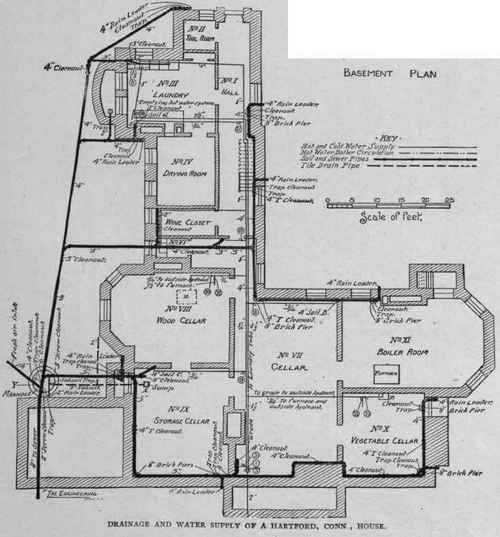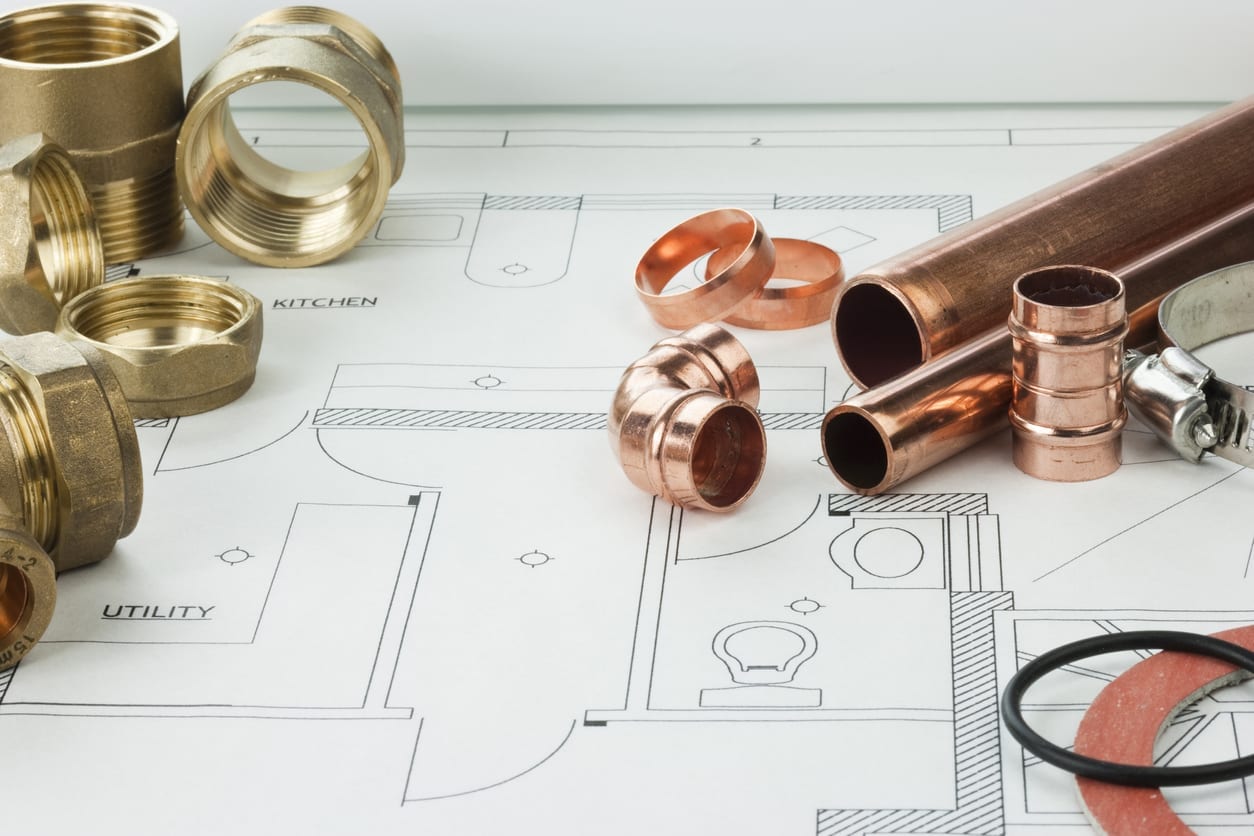Just how do you really feel on the subject of Anatomy of a House: Understanding the Components?

Understanding how your home's plumbing system works is important for each house owner. From supplying tidy water for drinking, cooking, and showering to securely removing wastewater, a well-maintained plumbing system is crucial for your family's health and comfort. In this comprehensive overview, we'll discover the intricate network that makes up your home's plumbing and offer tips on maintenance, upgrades, and handling common issues.
Introduction
Your home's plumbing system is more than just a network of pipes; it's a complex system that ensures you have access to clean water and efficient wastewater removal. Knowing its elements and how they work together can aid you protect against expensive repair services and guarantee whatever runs efficiently.
Standard Elements of a Pipes System
Pipelines and Tubing
At the heart of your plumbing system are the pipes and tubes that lug water throughout your home. These can be constructed from different materials such as copper, PVC, or PEX, each with its advantages in terms of durability and cost-effectiveness.
Components: Sinks, Toilets, Showers, etc.
Fixtures like sinks, toilets, showers, and bathtubs are where water is used in your home. Comprehending exactly how these fixtures link to the plumbing system assists in identifying problems and planning upgrades.
Valves and Shut-off Points
Shutoffs regulate the circulation of water in your pipes system. Shut-off shutoffs are critical throughout emergency situations or when you require to make repair services, enabling you to separate parts of the system without interrupting water flow to the entire house.
Water Supply System
Main Water Line
The major water line attaches your home to the metropolitan water or an exclusive well. It's where water enters your home and is dispersed to different fixtures.
Water Meter and Pressure Regulatory Authority
The water meter actions your water use, while a stress regulator ensures that water moves at a secure stress throughout your home's plumbing system, preventing damage to pipes and components.
Cold Water vs. Warm water Lines
Understanding the difference between cold water lines, which provide water directly from the major, and hot water lines, which carry warmed water from the water heater, aids in repairing and planning for upgrades.
Drainage System
Drain Pipes Pipes and Traps
Drain pipelines carry wastewater far from sinks, showers, and toilets to the drain or septic tank. Traps stop sewage system gases from entering your home and also catch debris that might cause blockages.
Air flow Pipes
Air flow pipes enable air right into the drain system, protecting against suction that might reduce drainage and trigger traps to empty. Correct ventilation is necessary for maintaining the stability of your pipes system.
Significance of Correct Drainage
Guaranteeing appropriate drainage avoids back-ups and water damages. Regularly cleansing drains and maintaining traps can prevent costly repair work and prolong the life of your pipes system.
Water Furnace
Sorts Of Hot Water Heater
Water heaters can be tankless or conventional tank-style. Tankless heating units warm water on demand, while tanks save warmed water for prompt usage.
How Water Heaters Connect to the Plumbing System
Understanding how water heaters connect to both the cold water supply and hot water distribution lines helps in detecting issues like insufficient hot water or leakages.
Upkeep Tips for Water Heaters
Routinely purging your water heater to get rid of sediment, examining the temperature setups, and evaluating for leakages can expand its life-span and boost energy performance.
Typical Plumbing Issues
Leakages and Their Causes
Leaks can happen because of maturing pipelines, loosened installations, or high water stress. Addressing leaks quickly avoids water damage and mold growth.
Clogs and Blockages
Obstructions in drains pipes and bathrooms are typically caused by purging non-flushable products or an accumulation of grease and hair. Making use of drainpipe screens and being mindful of what goes down your drains pipes can stop blockages.
Signs of Pipes Problems to Expect
Low tide pressure, slow drains pipes, foul odors, or unusually high water costs are signs of prospective plumbing problems that should be addressed promptly.
Pipes Upkeep Tips
Routine Assessments and Checks
Arrange annual plumbing examinations to capture problems early. Try to find indications of leaks, corrosion, or mineral accumulation in faucets and showerheads.
DIY Upkeep Tasks
Basic tasks like cleaning tap aerators, looking for bathroom leaks using color tablet computers, or protecting exposed pipelines in cool climates can avoid major pipes problems.
When to Call a Professional Plumber
Know when a pipes problem requires professional experience. Attempting complex fixings without appropriate knowledge can bring about even more damage and greater repair service costs.
Updating Your Plumbing System
Reasons for Updating
Upgrading to water-efficient components or changing old pipes can boost water high quality, reduce water expenses, and increase the worth of your home.
Modern Plumbing Technologies and Their Advantages
Check out technologies like wise leak detectors, water-saving bathrooms, and energy-efficient water heaters that can conserve money and lower environmental influence.
Expense Factors To Consider and ROI
Calculate the ahead of time costs versus lasting cost savings when taking into consideration plumbing upgrades. Lots of upgrades pay for themselves with reduced energy bills and less repairs.
Ecological Impact and Preservation
Water-Saving Components and Home Appliances
Mounting low-flow faucets, showerheads, and commodes can considerably lower water usage without compromising performance.
Tips for Minimizing Water Use
Simple routines like dealing with leaks without delay, taking shorter showers, and running complete lots of laundry and dishes can save water and reduced your energy costs.
Eco-Friendly Plumbing Options
Consider sustainable plumbing products like bamboo for floor covering, which is durable and eco-friendly, or recycled glass for countertops.
Emergency Preparedness
Steps to Take During a Plumbing Emergency
Know where your shut-off shutoffs lie and just how to switch off the water supply in case of a burst pipe or major leak.
Significance of Having Emergency Contacts Useful
Maintain call information for regional plumbing technicians or emergency situation solutions readily available for quick action throughout a pipes crisis.
DIY Emergency Fixes (When Suitable).
Momentary solutions like making use of duct tape to patch a leaking pipe or putting a container under a trickling tap can lessen damages up until a specialist plumber shows up.
Verdict.
Recognizing the anatomy of your home's pipes system encourages you to maintain it efficiently, conserving money and time on repairs. By complying with routine upkeep routines and remaining informed about contemporary plumbing innovations, you can guarantee your pipes system operates effectively for many years ahead.
HOW YOUR PLUMBING SYSTEM WORKS
Which Pipes Do What?
Blue lines = fresh water supply entering the building
Red lines = hot water supply entering the building
Grey lines = pipes carrying waste away from the building and venting pipes carrying gases away from the building (through the roof)
YOUR MAIN PLUMBING SYSTEMS
There are two main plumbing systems that support your home s basic plumbing needs one that brings clean water into your home, and one that sends dirty water away from your home. Connected to the toilet, bath, shower, and other faucets in your home, these two systems keep your water flowing in the right directions.
ACCESSING FRESH WATER
Fresh and clean water is brought into your home through the main water supply line . Filtered through one pipe, this water is pressured to flow into the various fixtures in your home at any given time.
This water can be sourced from a well located on your property, a pond or river (mostly cottages), or, as in most cases, from the city s municipal water treatment centre. However, it is important to note that water that is untreated, such as the water siphoned from ponds or rivers, may not be safe to drink. Personal water supplies always need to be treated for hardness and contaminants before consumed.
MUNICIPAL WATER SUPPLIES
Improve taste and odour
Remove sediment
Eliminate hardness
Reduce chlorine
COLD WATER SUPPLY VS. HOT WATER SUPPLY
Cold water flows into your home or building through the service line, which then distributes hot or cold water to your fixtures. This line is most commonly run through a central column that runs floor to floor. Hot water runs in short and straight pipes as the longer the pipeline, the more heat that will be lost in the transfer. Having shorter pipes also allows residents to access hot water more quickly.
WASTE WATER SYSTEM
Your wastewater system is divided into two parts pipes that send wastewater away from your home and venting pipes that send sewer gas away from your home. Sewage water travels through pipes that flush the water and waste towards local sewers that are operated and managed by your city or town. Most sewer systems rely on gravity to move the wastewater to where it needs to go.
The further away from your toilet or sink, the larger wastewater pipes become. This allows for waste to be disposed of from various parts of your home or business at once without pipe blockages. The angle and flow of these pipes are also essential for keeping your waste pipes clear of build up.
https://harrisplumbing.ca/how-your-home-plumbing-system-works/

HOW YOUR PLUMBING SYSTEM WORKS
Which Pipes Do What?
YOUR MAIN PLUMBING SYSTEMS
There are two main plumbing systems that support your home s basic plumbing needs one that brings clean water into your home, and one that sends dirty water away from your home. Connected to the toilet, bath, shower, and other faucets in your home, these two systems keep your water flowing in the right directions.
ACCESSING FRESH WATER
Fresh and clean water is brought into your home through the main water supply line . Filtered through one pipe, this water is pressured to flow into the various fixtures in your home at any given time.
This water can be sourced from a well located on your property, a pond or river (mostly cottages), or, as in most cases, from the city s municipal water treatment centre. However, it is important to note that water that is untreated, such as the water siphoned from ponds or rivers, may not be safe to drink. Personal water supplies always need to be treated for hardness and contaminants before consumed.
MUNICIPAL WATER SUPPLIES
COLD WATER SUPPLY VS. HOT WATER SUPPLY
Cold water flows into your home or building through the service line, which then distributes hot or cold water to your fixtures. This line is most commonly run through a central column that runs floor to floor. Hot water runs in short and straight pipes as the longer the pipeline, the more heat that will be lost in the transfer. Having shorter pipes also allows residents to access hot water more quickly.
WASTE WATER SYSTEM
Your wastewater system is divided into two parts pipes that send wastewater away from your home and venting pipes that send sewer gas away from your home. Sewage water travels through pipes that flush the water and waste towards local sewers that are operated and managed by your city or town. Most sewer systems rely on gravity to move the wastewater to where it needs to go.
The further away from your toilet or sink, the larger wastewater pipes become. This allows for waste to be disposed of from various parts of your home or business at once without pipe blockages. The angle and flow of these pipes are also essential for keeping your waste pipes clear of build up.
https://harrisplumbing.ca/how-your-home-plumbing-system-works/
Hopefully you liked our section on Understanding Your Home's Plumbing Anatomy. Thank you so much for taking a few minutes to read through our piece of content. I beg you take a moment to share this entry if you liked it. Thanks for going through it.
Book